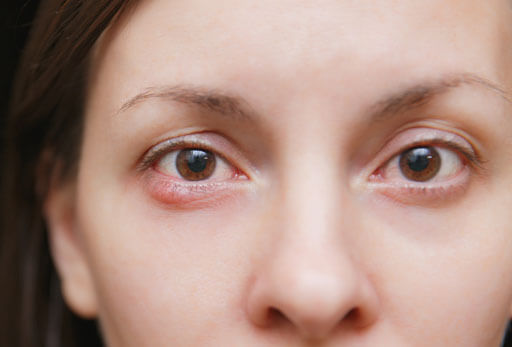
Abscesses are lumps that form on or beneath the skin surface and are typically filled with pus or transparent fluid. They can occur anywhere on the body. The most popular locales, however, are:
Skin abscesses are generally detectable by touch, particularly when surrounded by a pink or dark red region. At first appearance, an abscess seems to be a pimple. However, the longer it stays, the more it expands to resemble a cyst. Depending on the etiology of the abscess, the following symptoms may appear:
The most prevalent cause of skin abscesses is Staphylococcus bacteria. You are more likely to have a staph infection if you have:
Staph infections can be fatal if the bacteria spreads to other parts of the body or enters the circulation, joints, bones, lungs, or heart. Abscesses can form when a hair follicle becomes blocked and is unable to break through the epidermis. These infected follicles (folliculitis) can also emerge after spending time in a pool or hot tub that is not properly chlorinated.
Some abscesses can be fatal or have long-term consequences if not treated properly, including:
A minor abscess, less than 1 cm in diameter, may respond to home treatments such as providing heat to the region with a warm compress. If the abscess fails to react to this treatment, medical care may be required.
Antibiotics: Acute skin abscesses are often treated with antibiotics such as dicloxacillin or cephalexin, especially if you have any of the following symptoms:
Your doctor may prescribe the medications clindamycin or doxycycline to treat an abscess caused by methicillin-resistant Staphylococcus aureus (MRSA).
Abscess Drainage: If at-home remedies are ineffective, your doctor may drain the abscess by numbing the region and cutting the abscess open to allow the fluid to drain. Your doctor will pack the incision with surgical material to avoid recurrence of the abscess and will provide antibiotics to keep the wound from becoming infected. The abscess should not resurface once you receive proper treatment.
It is not always easy to avoid the formation of a skin abscess. There are, however, a few things you can do to reduce your risk:
Anaphylaxis is a life-threatening allergic reaction that affects the circulatory, respiratory, gastrointestinal, and cutaneous systems. Fortunately, if detected early enough, it can be treated.
The following are some of the more prevalent symptoms:
Anaphylaxis requires prompt attention since it can swiftly deteriorate into a life-threatening situation. Doctors usually urge persons who are prone to this sickness to carry epinephrine, a drug that quickly enters the bloodstream and treats symptoms. It’s usually injected with a gadget the size of a large pen that parents and older children can easily handle.
If your child has an allergic reaction, inject epinephrine immediately and call 911 or go to the nearest emergency room. Because a second wave of symptoms is probable, your child will most likely be closely monitored for a few hours to check that everything is normal.


Ankle and foot fractures, as well as tendon injuries, are frequently misinterpreted as sprains. This can result in insufficient treatment, which raises the risk of long-term damage and reinjury. If your foot and ankle are bothering you and you’re not sure why, make sure you go into your doctor’s visit prepared to discuss the various sources of your discomfort.
The following are the four most common fractures and tendon injuries that are misdiagnosed as sprains:
1. Fifth Metatarsal Fractures
2. Navicular Fractures
3. Talar Dome Lesions
4. Personal Tendon Injuries
Bug bites are generally nothing more than an irritant, but in rare cases, they can become harmful. We are experiencing a warmer winter than usual, and while spring is still a long way off, there are more bugs out than usual this time of year. Here are several warning indicators that your bite may require medical treatment, as well as some basic precautions you may take.
When insect bites are followed by significant bruising, swelling, or discomfort, it is an indication that you should seek medical attention. This is especially true if the swelling spreads far beyond the location of the initial bite.
There are also times when a person has to rush to the nearest emergency medical facility, such as when an insect bite causes:
Keep an eye out for indications of a severe allergic response if you or a loved one is bitten or stung by an insect. If a person is extremely allergic to the chemicals in an insect bite or sting, they will experience anaphylaxis, frequently within minutes of coming into touch with the bug.
1. Vector-Borne Diseases
Most people are obsessed with the agony of a bite or sting, and they forget that bugs can also transmit dangerous illnesses. You wouldn’t want to be bitten by a sewer rat or pecked by a pigeon, so you shouldn’t ignore bug bites and stings, especially if you start to feel more serious symptoms. The following are a few of the most prevalent illnesses spread by insects in the United States:
Lyme Disease: Lyme disease is spread by blacklegged and western blacklegged ticks, which are common in the eastern and northern United States. A huge red “erythema migrans” rash shaped like a target appears, with a red ring growing around the red bite. Patients with Lyme disease may experience fever, muscle and joint discomfort, and even paralysis as the condition develops. Fortunately, antibiotics are highly effective in treating Lyme disease. Wearing long-sleeved shirts and trousers before going outside can help you avoid Lyme illness. You should also thoroughly search yourself for small ticks and remove them after spending time outside, as it takes three to four days for the disease to be transmitted to people. These precautions are critical since there were over 35,000 confirmed and probable cases of Lyme disease in the United States in 2016, making it the most often reported vector-borne illness in the country.
West Nile Virus: This viral illness is most commonly spread by mosquitoes that have dined on affected birds with high virus concentrations in their blood. Because no vaccine or antiviral cure for West Nile virus has been established, doctors usually assist patients by administering medicine to alleviate their symptoms. Fortunately, 80 percent of folks have no unpleasant effects at all. However, 20% may get fevers, chills, pains, lethargy, and stomach difficulties that resolve with time. Less than 1% of people have serious neurological disorders, and around 10% of these patients die.
Rocky Mountain Spotted Fever: The most prevalent vectors of this severe bacterial infection are American dog ticks, Rocky Mountain wood ticks, and brown dog ticks. Those who have been bitten will get a fever, headache, or gastrointestinal problems quickly after being bitten. As the illness progresses, many people get a red or purple speckled rash, as the name suggests. Unlike other insect bites, the rash is usually not itchy. Rocky Mountain spotted fever is treated with antibiotics that kill the Rickettsia rickettsii bacterium. If you experience any of the symptoms listed above, you should consult a doctor as soon as possible. This condition can cause serious organ damage, blood vessel damage that requires amputation, and, in rare circumstances, death.
2. Infected Insect & Bug Bites
Most insect and bug bites will not grow infected if you avoid scratching them and popping any blisters. However, as our immune systems tends to overreact and induce swelling and inflammation at the site of a sting or bite, this is easier said than done. The duration and location of the reaction may usually tell you if a bite or sting is infected. A normal insect sting or bite will cause a localized reaction where the bug made contact with you. If it spreads considerably more than that – 4 inches or more – it might be an indication of an infection. If you have a history of minor allergic responses to insect bites, the reaction should only last a few days or a week at most.If it persists, you may require extra treatment. If you have increasing levels of redness, itching, and pus, you should seek antibiotic treatment for an infection. Waiting until you develop a fever or enlarged lymph nodes is an indication that the infection has progressed throughout your body.
3. Open Wounds
Picking and itching at the sting or bite might result in open wounds. When the tissue is repeatedly disturbed, it might die and become “necrotic tissue.” Unfortunately, necrotic tissue is unable to mend and hence cannot develop and cover the wound. It is also more prone to harboring dangerous microorganisms, which might stymie recovery. To treat a major open wound, surgeons use scalpels, dressings, chemicals, or other ways to separate the dead and injured tissue from the healthy tissue. Healing can resume once the necrotic tissue has been removed.
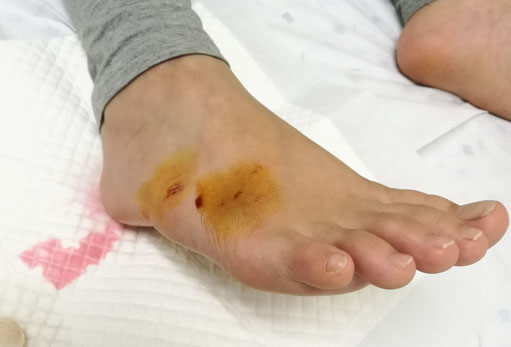

A bladder infection may be excruciatingly painful, but it is also, regrettably, incredibly common — particularly among women. In fact, one in every three women will have to deal with this issue at some time in their life. Here are some of the causes of bladder infections, as well as symptoms to look out for.
The E. coli bacteria is one of the most prevalent causes of bladder infection. Women, on the other hand, can have an infection following sexual contact, making it easier for germs to enter the bladder. Pregnant women are more vulnerable given the change in their urinary systems. Fortunately, this form of illness normally clears up fast and is usually safe as long as it is treated. When a guy has a bladder infection, it might be a symptom that he has an underlying disease. It might, for example, indicate an obstruction in the urinary system. If you experience painful urination along with fever, chills, fever, or back or abdominal discomfort, this might be an indicator of a kidney problem or a prostate infection.
These are some of the early warning signs of a bladder infection. If you detect any of them, get to a medical center as quickly as possible to receive the proper treatment. If you have painful urination and other symptoms such as back or abdominal discomfort, vomiting, chills, or fever, see a doctor right away. This could mean you have a prostate infection, a urinary tract stone, or possibly kidney damage.
Acute bronchitis is one of the most prevalent respiratory infections, with almost 5% of American adults seeking treatment for the sickness each year. It is often caused by viruses and causes symptoms such as a persistent cough, sore throat, and body pains.
While most occurrences last less than three weeks and can be treated at home, bronchitis can develop into a potentially severe infection and become a medical emergency. Here are some indications that you should seek medical attention:
1. Extreme Changes in Body Temperature
For example, if your body temperature falls below 95oF or rises beyond 104oF, you’ll almost certainly need to attend a 24-hour emergency care center.
2. Rapid Heart Rate
Similarly, if your resting breathing rate surpasses 30 breaths per minute or your resting heart rate exceeds 125 beats per minute, you must seek emergency medical attention.
3. Difficulty Breathing
Also, if your nails or lips begin to turn blue or gray, or if you grow weary from working tirelessly to breathe, go to an emergency room.
4. Dizziness or Confusion
If you become dizzy or confused, or you faint, then you may need to be given intravenous medications or oxygen.
If your bronchitis symptoms have not progressed to the point where you require emergency medical attention, there are various things you may do to help yourself heal. To begin, drink at least 6-8 big glasses of water every day to help release mucus in your lungs. This will assist you in coughing out the mucus and making it easier to breathe. Take additional drugs to assist releasing mucus. Consult your doctor to ensure if using Advil, Motrin, or Tylenol to treat any fever or aches and pains is safe for you. You should not only refrain from smoking, but you should also abstain from drinking. Alcohol can reduce the sneeze and coughing reflexes required to clear the lungs, as well as reduce the efficacy of any treatments you may be taking.


Cuts are something that almost everyone has experienced at some point in their lives. Cuts are puncture wounds that go through the skin. Many people inadvertently cut themselves at work or at home. Falling when playing or falling from a bicycle frequently results in wounds in children. The majority of wounds can be treated at home, but a cut may require a trip to the emergency department.
Most parents are well aware of the devastation that ear infections can cause in children. This is usually caused by a viral or bacterial infection in the middle ear, which houses the ear’s tiny, vibrating bones. Here are some of the risk factors for this problem, as well as ways you may assist avoid it from happening.
One of the most important risk factors for ear infections is age, particularly between the ages of 6 months and 2 years. The major reason for this is that most children’s immune systems have not completely formed during this period. However, when a youngster is cared for in a group environment, another aspect comes into play. He or she is more likely to catch a cold or get an ear infection than a youngster who remains at home. Poor indoor air quality might also raise the risk.
Here are a few pointers to assist you avoid getting an ear infection
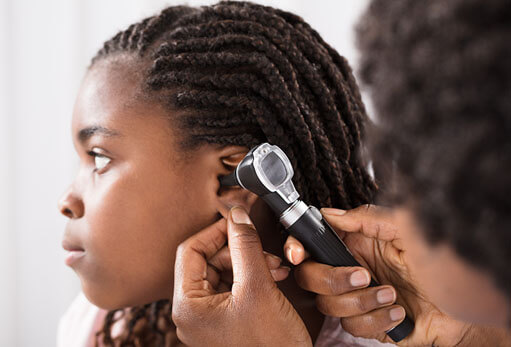
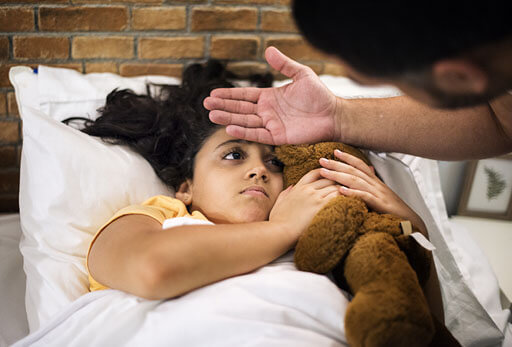
Strep throat is a throat illness caused by group A Streptococcus bacterium (group A strep), which causes tonsil and throat inflammation and swelling. The cylindrical tube that links your mouth to your windpipe and esophagus is known as the throat.
People in excellent health can recover from strep throat at home by taking prescription antibiotics as advised. Additional care may also involve steps to help relieve symptoms and maintain the body as strong as possible in order to reduce the chance of acquiring new illnesses. Drinking plenty of water, using medicine to relieve physical pains and fever, and relaxing are all examples of self-care measures.
Flu epidemics are inconvenient for everyone affected. The afflicted individual must endure a week or more of agony, while family members and coworkers must pick up the slack until the ill recovers, and everyone in the neighborhood lives in terror of being the next victim. The flu virus is a constant concern at this time of year. Every year, between 9.2 and 35.6 million individuals in the United States contract the flu, according to the Centers for Disease Control and Prevention. That equates to 2.8 to 11% of the country’s population. Annual hospitalizations range between 140,000 and 710,000. In the United States, influenza-related deaths vary between 12,000 and 56,000 every year.
During a typical flu season, the majority of healthy individuals can fight off the flu with the aid of an antiviral medicine given by their doctor without needing to be admitted to the hospital. The majority of fatal instances involve the elderly or extremely small children.
Even if the flu does not pose a life-threatening threat to the typical worker or employer, it may be extremely disruptive to businesses, particularly small ones. The flu may be very contagious if people work in close quarters, but there are safeguards employees and employers can take to reduce their risk.
Approximately 59 percent of children and 43.3 percent of adults received a flu vaccination during the 2016–2017 flu season. Only about 37.5 percent of those in the 18- to 64-year-old age group, which includes the majority of employees, were vaccinated. Employers are understandably concerned when nearly two out of every three workers are at danger of acquiring the flu each season. Recognizing that a sizable number of employees will not obtain a flu vaccination on their own initiative, several forward-thinking companies have begun offering flu shots to staff.There are a number of businesses that allow employers to set up an onsite vaccination clinic so that employees do not have to sacrifice their vacation time to stand in line someplace to receive a flu shot.Implementing an onsite vaccination clinic is a great way to drastically boost your office’s vaccine coverage rate. Many insurance companies also provide free flu shots. Check with your insurance company to see whether your plan covers free preventative treatments like flu vaccines.
Approximately 24 hours before symptoms appear, those who have the flu can start distributing it to others. Although most people strive to avoid sneezing or coughing in front of someone without covering their mouth, they are often unconcerned with speaking in close proximity to someone when they are well.
Businesses with the ability to do so may want to consider allowing employees to work remotely during a particularly virulent office flu outbreak. One of the most effective ways to avoid acquiring influenza is to avoid close contact with infected individuals. You can’t always count on those who are sick to stay at home, where they belong, in our workaholic world. There will always be employees who come to work even if they are unwell, and in some cases before symptoms appear but after they have become contagious. Strictly implementing a policy requiring employees with flu and cold symptoms to work from home at the very least may be another effective strategy for employers to reduce the spread of the flu in the workplace. People with the flu can begin spreading it to others approximately 24 hours before symptoms even manifest. If your company has the resources, consider allowing workers to work from home during a particularly severe workplace flu outbreak. One of the greatest strategies to avoid acquiring influenza is to avoid direct contact with those who are afflicted. You can’t always count on ill people to stay at home where they belong in our workaholic society. Employees will always come to work even if they are sick.
During flu season, businesses that need frequent travel may need to make minor adjustments to their operations. It is beneficial to both businesses and the general public if persons who are sick with the flu or a cold avoid flying. With so many people stuck in close quarters inhaling the same air for extended periods of time, airlines are excellent breeding grounds for flu and cold viruses. Furthermore, no one loves traveling while they are unwell, and as a result, work performance is likely to decrease.


These are only a few of the most prevalent injuries.
While it may seem self-evident that you should visit a doctor as soon as possible if your knee pain is so bad that you can’t walk correctly, many individuals try to “wait it out” in the hopes that the pain will go away. If you find it difficult to walk, you may have significant bone damage. Anything that has an impact on your quality of life should be handled as soon as feasible.
If you see any kind of swelling or redness in your knee, you should seek medical attention. If you sense a feeling of warmth, you should visit a doctor. Any of these signs and symptoms might indicate the presence of an infection. Chills, nausea, and a fever are among the other symptoms.
Knee discomfort that persists after many weeks is one of the most telling symptoms that you should see a doctor. You may have a torn muscle or cartilage if you’ve attempted self-care treatments including over-the-counter medicine, ice, and rest and they haven’t worked. There’s no way to know if this condition will get better without medical help.


When you get a migraine, you want relief right away. However, painkillers and prescription migraine treatments don’t always help. You may have no choice except to wait it out, as painful as that may be.
A terrible headache, on the other hand, can be deadly in some situations, and you should seek immediate migraine relief for your throbbing headache. Migraines are dangerous and should not be disregarded. Make certain you understand the distinction. Take the time to learn when you should seek emergency migraine treatment.
1. Excessive vomiting
Vomiting can sometimes make a migraine go away or at least lessen in intensity. However, if you continue to vomit without relief, you may get dehydrated. Dehydration isn’t as innocuous as it appears, and it may lead to delirium and loss of consciousness, among other things.
2. You’re having the worst migraine ever
You are familiar with your own body. You understand agony as a migraine sufferer. If the agony is unlike anything you’ve ever felt before, it might be a brain aneurysm, which is a bulging artery in the brain that is about to explode.
3. You’re having the longest migraine ever
Many doctors believe that a headache of this scale that lasts longer than 72 hours without at least 4 hours of respite increases the chance of stroke.
If you have what could be a dangerous migraine, you should not try to wait it out or wait until morning. You should seek emergency relief now. Complete Care reinvented the emergency room experience. Conveniently located in Arlington, Austin, Corpus Christi, El Paso, Fort Worth, San Antonio, Southlake, and Tyler, TX, our ER locations are free-standing, so no miserable hospital traffic or trouble parking.
Vomiting. It’s one of those topics that turns people off and makes their faces pucker into disgusted grimace. It’s unpleasant and awful. It’s also something that everyone will go through several times throughout their lives. Other problems arise as a result of nausea: discomfort, the inconvenience of remaining at home to prevent public shame, and the fear that something terrible is wrong with your health. What are the most prevalent causes of vomiting and nausea? Is there anything you can do to get it under control? We do, in fact , have answers.
1. Indigestion
After a meal, indigestion is pain or discomfort in the stomach. It can be caused by acid reflux, excessive alcohol use, smoking, or gastrointestinal inflammatory illnesses.
5. Pregnancy
Some ladies feel like they’re on top of the world when pregnant. For others, life is a living nightmare. Morning sickness is called after a certain time of day, although nausea and vomiting can last all day, beginning around the sixth week of pregnancy. It may appear and disappear throughout the pregnancy.
7. Ulcers
Ulcers are sores in the stomach lining that are open. Bloating, heartburn, red or black feces, or a burning feeling in the belly are all signs of ulcers (especially after drinking citrus juice, coffee, or alcohol).
Treatment for Nausea from Ulcers: Include foods high in flavonoids in your diet, in addition to taking prescription medication: berries, green tea, red grapes, kale, and apples. Probiotics and honey might aid with nausea relief. Inquire with your doctor about the use of antacids.
If any of the following apply to you, get medical help:

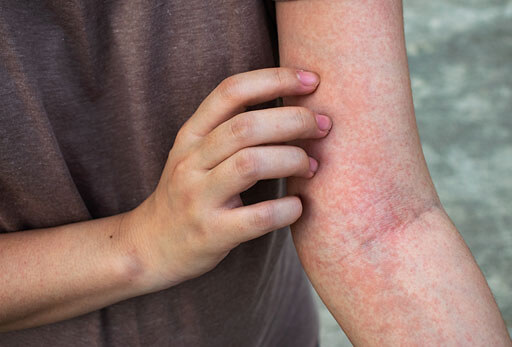
With competent medical care from Aether Health – Kingwood ER, you can get rid of your rashes. Most rashes can be treated at home, but other rashes can have significant consequences, ranging from severe bleeding to breathing problems. With experienced comprehensive medical treatment from Aether Health – Kingwood ER, you can properly treat your rashes. Make an appointment with us right now.
Sinusitis (sinus infection) causes a slew of unpleasant and draining symptoms. Of course, having a sinus infection is uncomfortable, but how can you tell when it has progressed to a major problem? While most sinus infections go away on their own within a few days, if left untreated, a sinus infection can cause major medical problems.
Here are some warning indications that a sinus infection is becoming more serious and that medical intervention is needed.
1. High Fever
It’s very common to have a fever when combating an infection, even a sinus infection. As the body burns fluids to fight the illness, the temperature will rise. Anything above 100.5 F, on the other hand, is abnormal. A greater temperature might signal that the illness has spread to other regions of the body, necessitating medicine to treat it.
2. Severe Pain
There will undoubtedly be some pressure and discomfort with a sinus infection, but if the pain becomes severe, it is time to contact a doctor. If you have extreme discomfort in your eyes, throat, ears, or head, you may have a sinus infection. The infection can readily spread to the eyes or ears, resulting in an infection. The sinus infection can potentially extend to the lining of the brain, resulting in meningitis, a very deadly illness.
3. Chronic Sinus Infections
A sinus infection usually goes away in a few days to a week. However, when the infection lasts for a long time, it becomes a dangerous sinus infection. When a sinus infection lasts four weeks or more, it is considered chronic. A persistent sinus infection may indicate the presence of a larger, underlying issue that is producing the illness in the first place. Constant infection can also contribute to the development of more severe illnesses. If your sinus infection lasts four weeks or more, you should contact a doctor to avoid the condition becoming more serious.


The bacteria group A Streptococcus (group A strep) causes inflammation and swelling of the tonsils and throat, resulting in strep throat. The cylindrical channel from your mouth to your windpipe and esophagus is known as your throat. The technical word for the throat is pharynx, which is why streptococcal pharyngitis refers to a painful and inflamed throat caused by a group A Streptococcus infection. Streptococcal tonsillitis is another name for strep throat (inflammation of the tonsils). The majority of sore throats are caused by viral illnesses, while strep throat is the most prevalent bacterial cause.
When left untreated, strep throat can lead to more significant health concerns in other regions of the body. Bacterial colonies can enter the kidneys, heart, and other organs. Quick diagnostic tests are performed to determine whether a sore throat is caused by group A Streptococcus, allowing for prompt antibiotic treatment. Strep throat is contagious and spreads quickly. Although it is more frequent among youngsters, the virus can be passed on to anybody by airborne particles. Red, inflamed, and swollen tonsils, as well as a painful throat, are signs of strep throat. White pus spots on the tonsils are possible. Fever, headache, and swallowing pain are some of the other symptoms.
People in excellent health can recover from strep throat at home by taking prescription antibiotics as advised. Additional care may involve steps to help relieve symptoms and maintain the body as healthy as possible in order to reduce the chance of acquiring new disorders. Drinking enough of water, taking medications to relieve physical pains and fevers, and relaxing are all examples of self-care measures. Antibiotics prescribed by a doctor are essential to treat strep throat. If you have strep throat symptoms such as fever and sore throat, or if you have increased swelling of the tonsils, or if you have a confirmed case of strep throat that is not improving with medications, seek medical help right away. More acute strep throat complications, such as rheumatic fever and rheumatic heart disease, can be life-threatening in rare situations. If you or someone you’re with is having trouble breathing, swallowing, or has a change in awareness or alertness, seek medical help right once (phone 911).
Summer is the ideal time to go outside and enjoy the sunshine. Unfortunately, if you don’t take the right measures, you can become dehydrated. Follow these guidelines and keep an eye out for signs of dehydration so you can enjoy your summer safely.
Water makes up around 60% of an adult human’s body weight, and it plays a critical role in the body’s daily processes. Humans lose water through breathing, sweating, and urination on a daily basis. Humans require a substantial amount of water to keep healthy due to this continual water loss. Dehydration occurs when the amount of water leaving the body is greater than the amount being ingested.
Many normal bodily activities produce water loss, which is exacerbated by sickness or heated weather. Dehydration is common in the following situations:
Diarrhea: If left untreated, increased water loss during bowel movements produces a considerable drop in water levels.
Vomiting: Constant vomiting could cause serious fluid loss.
Excess sweating: Sweat production can be increased by intense workouts and time spent in the heat, resulting in considerable water loss.
Diabetes: Sugar enters the urine when blood sugar levels are high. Then comes the water, which causes frequent urination, extreme thirst, and maybe dehydration.
Burns: The skin regulates the flow of liquids and the temperature of the body. Because water seeps into the injured epidermis from within the body, burn sufferers might become dehydrated.
To preserve water, the body reduces urine flow and the brain sends thirst signals in response to dehydration. If you continue to be dehydrated, your urine will grow more concentrated in urea and appear yellow.
As the amount of water lost rises, more symptoms appear, such as:
As the body’s organs get less blood, it will feel disorientation and weakness in the last stages of dehydration. If dehydration is not addressed, it can lead to coma and organ failure. Dehydration over long periods of time can cause major health concerns, such as heat stroke, urinary and renal difficulties, convulsions, and hypovolemic shock.
Changes in food and drugs can be used to address early indications of dehydration at home. Those suffering with nausea and diarrhea, for example, might change their diet and use medicine to alleviate their symptoms.
Clear liquids should be used before attempting oral rehydration again. Liquids that are acceptable include:
Fluid replacement is the chosen therapy for more severe dehydration. An intravenous fluid (IV) may be required if oral rehydration does not work or is not possible due to illness or injury. Individuals who are very dehydrated should be brought to a hospital or emergency room as soon as possible to begin rehydrating properly.
The simplest method to avoid dehydration is to have lots of water with you at all times, especially while spending time outside. Checking weather forecasts for days with high heat indexes is also beneficial. On hot days, it’s advisable to avoid physical activity and exposure to the sun.
The dangers of ingesting alcohol on hot days are something that many people overlook. Alcohol consumption causes you to lose more water while also reducing your capacity to detect early indications of dehydration. If you must go outside on a hot day, dress in light-colored, loose-fitting clothing, drink lots of water, and keep yourself cool with a personal fan or mister. Keep in mind that the elderly and little children are the most vulnerable to dehydration. Ensure that crippled or impaired people get enough fluids and that they get help when they need it. If you have an older relative, make sure someone can keep an eye on them at home since they are especially vulnerable.

Get Free Medical Consultation
Need help?